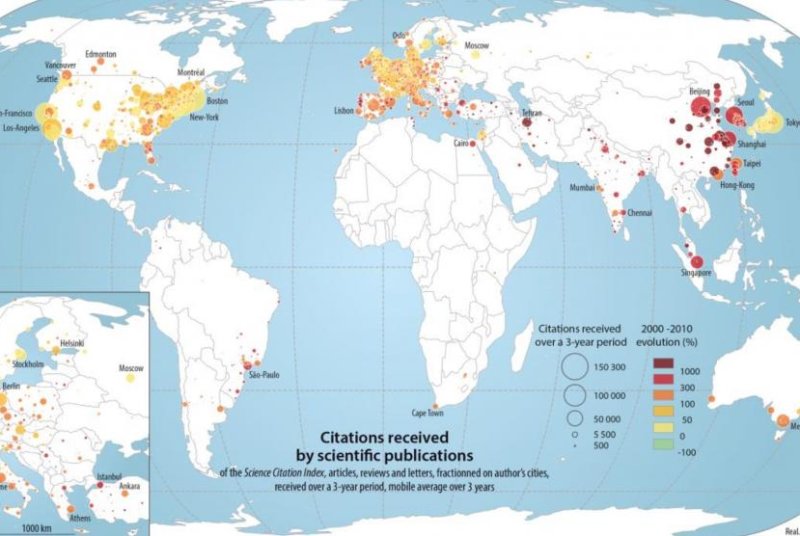A map of scientific citations reveals a geographical diffusion of scientific influence. Photo by Marion Maisonobe et al. with data from Clarivate Analytics & Natural Earth
Oct. 11 (UPI) -- Quality scientific research is happening in a diversity of places, new research shows, which means major hubs of scientific innovation -- New York, London, Paris, Tokyo -- aren't as dominant as they once were.
According to the analysis of researchers at the French National Center for Scientific Research, or CNRS, the academic landscape has been transformed by two major trends: the concentration of financial and human capital at a handful of major university hubs and the exponential growth of the global student population.
The growth of the student population has had a spatial diffusion effect on geography of scientific production. According to the latest data, this dispersion effect has counteracted and undermined the supposed upward concentration of resources in higher-education.
When scientists at CNRS geotagged 14 million scientific papers and their citations published between 1999 and 2011, they found an ongoing erosion of the hegemony previously enjoyed by major scientific hubs.
The number of times a paper is cited is often used as a rough measure of its importance and influence. In 2000 the top 10 global cities in terms of cited papers accounted for 23 percent of all citations. That number fell 17.3 percent in 2010.
The new data also revealed the growing influence of cities outside the Western Hemisphere, particularly Asian cities. A outsized growth in influence can be measured by comparing the ratio of a city's citations to the number of papers produced. A growth in scientific influence was measured in China, India, Singapore, Iran and South Africa.
In the United States, the data suggests the hegemony of New York's scientific dominance is being disrupted by the growing influence of Los Angeles and Chicago. In France, Paris' share of citations fell from 41.7 to 37 percent between 2000 and 2010.
Researchers say their findings -- published this week in the journal Scientometrics -- represent trends happening across all scientific disciplines, and that the spatial diffusion of scientific productions hasn't resulted in a decline in quality.















